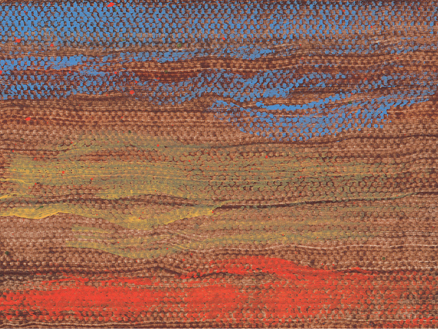Acrylic Painting Techniques
There are many ways to apply and manipulate acrylic paint. The next two pages share some of the most common techniques and special effects, from drybrushing to spattering. Once you get the basics down, you’ll be able to decide which techniques work best for each of your subjects. As you improve, you can spice up your art with multiple techniques!
LAYING WASHES
One of the most basic ways of applying acrylic paint is laying down a wash. In its simplest form, a wash is a flat coat of diluted color. There are four basic types of washes—flat, gradated, sponge, and variegated—which can be used to create dramatic skies, bodies of water, and multicolored backgrounds. Laying a flat wash is a simple way to cover a large area with solid color, or it can act as a subtle backdrop or even as an underpainting. Gradated washes are the perfect method for painting realistic skies and water. These washes are laid in the same way as flat washes, but water is added to the pigment for each successive stroke of paint, so the color gradually fades as you work down. A sponge wash is a fast, easy way to cover a large area with color. It’s best to use a natural sponge, as its texture creates a soft, smooth wash. A variegated wash consists of one or more colors and often is used for sunset skies or vibrant, multicolored seas.

FLAT WASH Wet the support with clear water; then tilt your support at a slight angle. Load a flat brush with heavily diluted color, and make an even, horizontal stroke across the top of the support. Load your brush and make another horizontal stroke, slightly overlapping the previous stroke. Continue making overlapping strokes (loading your brush each time) all the way down the support.
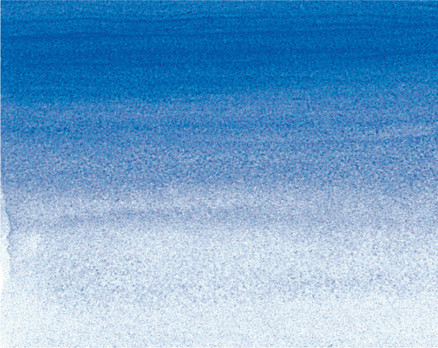
GRADATED WASH Apply a slightly diluted band of color across the top of a damp support, as you did in the flat wash. Add more water to your brush and make another horizontal stroke so that it slightly overlaps the first stroke. Dip the brush in water (but not color) before each stroke. If you wish, go back in with more color or water to smooth the gradation.

SPONGE WASH Dampen the support with a clean, wet sponge. Then dip the sponge into diluted color and drag it across the top of the support. Dip the sponge in the paint before each stroke, and continue stroking back and forth until the support is covered. When finished, lay the support flat to dry—any streaks of paint should merge and disappear as the paint dries.

VARIEGATED WASH Starting with a damp support, use a brush or sponge to apply the first color across the top of the support. Work down the painting surface, laying in uneven strokes of different colors and letting them bleed into one another. Work quickly, before the paint dries. Alternate colors or add new colors with each stroke, depending on the desired effect.
DRYBRUSHING To create coarse, irregular strokes, load your brush and wipe off excess paint with a paper towel; then lightly drag the brush over the support. Drybrush mimics rough, natural textures like wood.
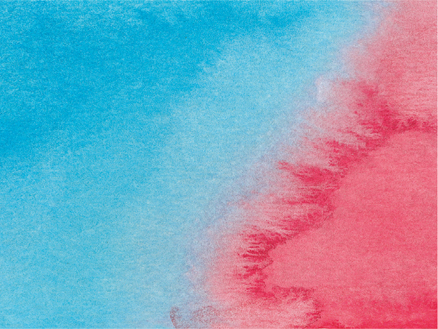
WET INTO WET To make subtle gradations and blends, apply a color next to another that is still wet. Stroke the colors together where they meet, and use your brush to soften the edges to produce smooth transitions.
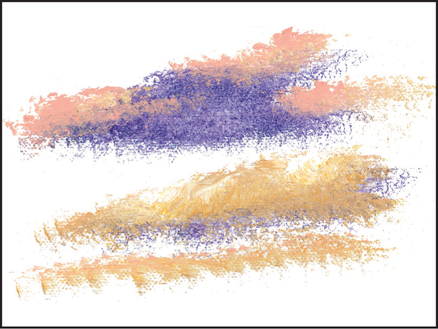
SPONGING To produce a mottled texture, use a sponge to apply the paint. First dab the sponge in the paint; then lightly dab your canvas. The resulting texture is perfect for rendering sand, rocks, or clouds.
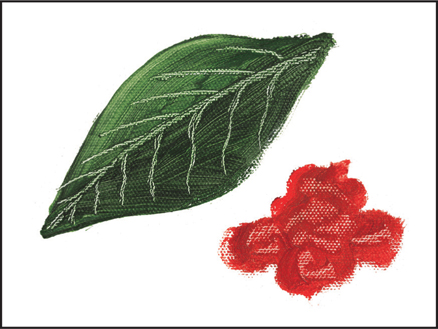
SCRAPING Also called “sgraffito,” scraping removes wet paint from the canvas to reveal lighter values beneath. Use a pointed tool or your brush handle to “draw” lines in the paint, such as those for the veins of leaves.

SPATTERING Speckle your canvas with fine dots of color with this technique. Just load your paintbrush with diluted paint and run your thumb against your brush’s bristles. This technique can be used for depicting flower fields or to produce a grainy texture.
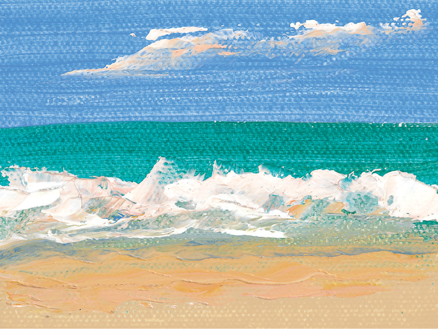
IMPASTO To create a buttery texture, apply very thick strokes of paint to your canvas with either your paint-brush or your palette knife. This technique adds dimension to the paint itself, making it perfect for rendering the foamy white crests of waves.


